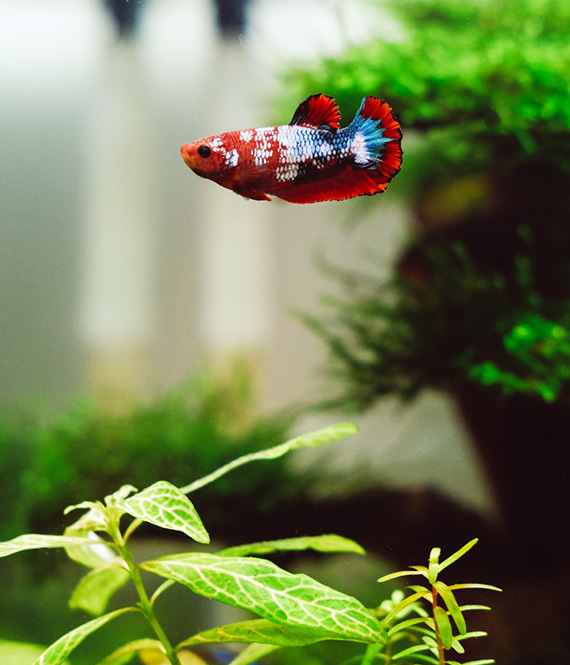
Female Betta Fish: a Quick Guide For Aquarium Hobbyists And Beginners
We recommend helpful products in our articles. Read our full disclosure here. The content on this website is not intended to be a substitute for professional advice, diagnosis, or treatment.
If you’re an aquarist looking to add a touch of elegance and vibrancy to your fish tank, look no further than the enchanting female betta fish.
These graceful aquatic creatures have been capturing the hearts of fish enthusiasts around the world.
In this comprehensive guide, we will delve into the captivating world of female Betta fish, exploring their habitat, care requirements, behavior, and much more.
Understanding Female Betta Fish
Female Betta fish, scientifically known as Betta splendens, are a remarkable species originating from the rice paddies and shallow waters of Southeast Asia.
Often referred to as “Siamese Fighting Fish,” Betta fish gained this name due to their territorial and competitive nature.
In comparison to their male counterparts, female Bettas showcase equally stunning colors and patterns, making them an ideal addition to any aquarium.
Appearance and Varieties
Female Betta fish exhibit a wide array of colors and patterns, from vibrant shades of blue and red to subtle hues of yellow and green.
Their fins can range from short and rounded to long and flowing, creating a captivating visual display when they swim.
Varieties like Veil Tail, Crown Tail, and Half-Moon showcase different tail shapes, adding to the allure of these aquatic beauties.
The Perfect Habitat
When it comes to providing a comfortable habitat for your female Betta fish, a well-maintained aquarium is essential.
A tank of at least 5 gallons is recommended, ensuring ample space for swimming and exploration.
These fish are tropical, so maintaining a consistent water temperature between 78°F and 80°F (25.5°C – 26.5°C) is crucial.
Use a gentle filter and include live plants, which not only enhance the aesthetic but also provide hiding spots and resting places.
Diet and Feeding
A balanced diet is vital for the health and vitality of your female Betta fish.
High-quality pellet food specifically formulated for Betta fish should constitute the core of their diet.
To supplement their nutrition, consider offering frozen or live treats like bloodworms, daphnia, and brine shrimp.
Remember to feed them in small portions to prevent overeating and maintain good water quality.
Social Behavior and Tank Mates
Unlike their male counterparts, female Betta fish are generally less aggressive and can coexist peacefully in groups known as sororities.
However, introducing multiple females in the same tank requires careful consideration.
Provide ample hiding spots and monitor their behavior closely.
Avoid housing them with fin-nipping or aggressive species.
Peaceful tank mates like Corydoras, small Tetras, and snails can make compatible companions.
Breeding Considerations
While breeding female Betta fish is less intense than breeding males, it still requires a controlled environment.
Breeding tanks should be heavily planted to offer hiding places for the female after spawning.
Once the female lays eggs, it’s recommended to remove her to prevent aggression from other fish.
Raising the fry (baby fish) involves providing them with infusoria and then progressing to finely crushed pellet food as they grow.
Common Health Concerns
Maintaining a clean and well-maintained aquarium significantly reduces the risk of health issues for your female Betta fish.
However, common problems like fin rot, ich, and fungal infections can arise.
Regular water changes and proper filtration play a vital role in preventing these issues.
If you notice any signs of illness, it’s crucial to quarantine the affected fish and seek advice from a knowledgeable aquatic veterinarian.
Conclusion
In conclusion, female Betta fish are captivating aquatic companions that bring a touch of elegance and vibrancy to any aquarium.
Their diverse colors, patterns, and behaviors make them a joy to observe and care for.
By creating a suitable habitat, providing a balanced diet, and ensuring good tank mates, you can ensure the well-being and longevity of these enchanting aquatic creatures.
"We love to research problems, examine studies, analyze solutions, and share with you ideas that make life healthier. You can learn about us and our editorial standards here. Have suggestions or feedback to share? Send us a message!."













Leave a Comment